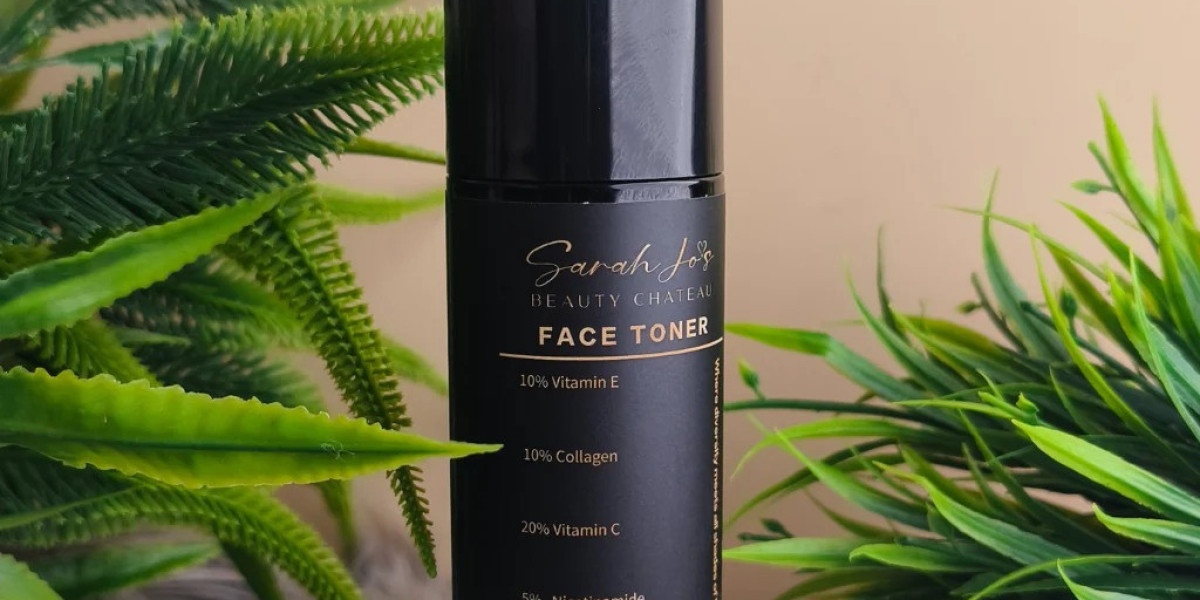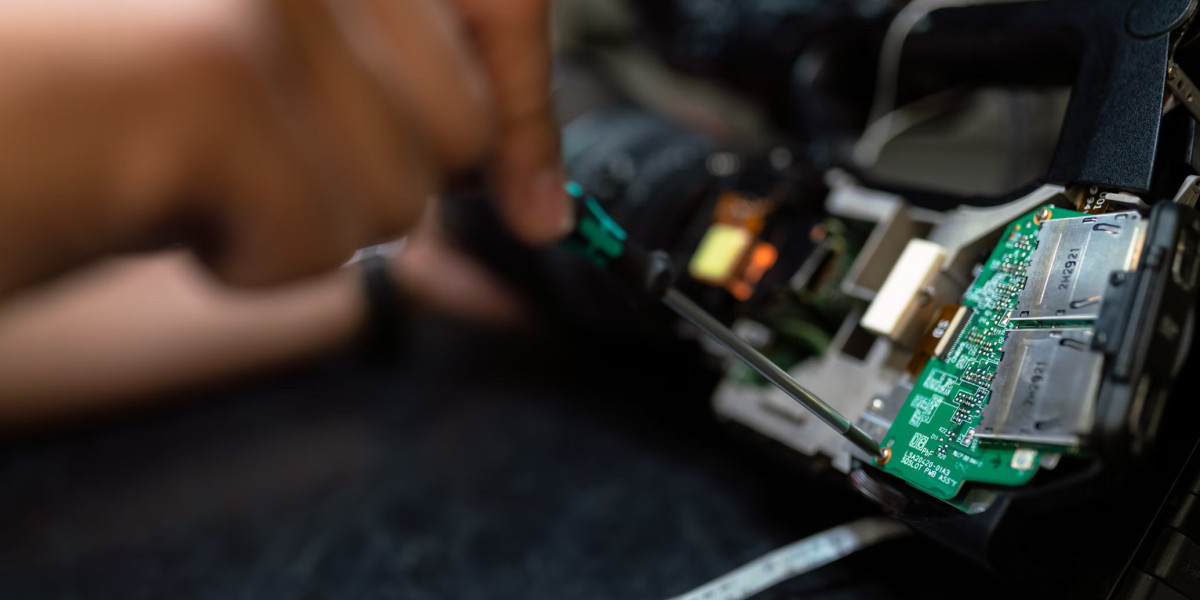Aging is a natural and beautiful part of life, but it's understandable to want to maintain youthful, glowing skin as long as possible. With the right anti-aging skincare routine, you can slow down the visible effects of aging and keep your skin healthy at every stage. Whether you’re in your 20s, 40s, or beyond, knowing what products to use—and when—can make a significant difference.
One key product to include in every stage of your routine is a face toner. Though often overlooked, a face toner can play a critical role in preparing your skin, enhancing product absorption, and maintaining your skin’s pH balance. Let’s explore how you can embrace your beauty by creating an anti-aging skincare routine tailored to your age and skin’s needs.
In Your 20s: Prevention is Key
While your skin may look firm and radiant during your 20s, this is the time to start preventing signs of aging before they begin to show. Building a solid skincare foundation now will pay off in the long run.
Key Ingredients and Tips:
Sun Protection
- The sun is one of the biggest contributors to premature aging, causing fine lines, wrinkles, and hyperpigmentation. Use a broad-spectrum sunscreen with SPF 30 or higher every day to shield your skin from harmful UV rays.
- Opt for sunscreens with antioxidants to provide added protection against environmental damage.
Antioxidants (Vitamin C)
- Introduce Vitamin C into your routine to protect your skin from free radicals that can cause damage. This antioxidant also brightens your complexion and helps fade dark spots.
- A Vitamin C serum used after your face toner can help strengthen your skin’s defense system.
Hyaluronic Acid
- To keep your skin hydrated, use products containing hyaluronic acid. This ingredient attracts moisture to the skin, keeping it plump and youthful.
- A hydrating face toner containing hyaluronic acid can ensure that your skin stays moisturized after cleansing and throughout the day.
20s Routine Essentials:
- Cleanser: Gentle, sulfate-free cleanser
- Face Toner: Hydrating toner with hyaluronic acid
- Moisturizer: Lightweight, non-comedogenic moisturizer
- Sunscreen: SPF 30 or higher daily
In Your 30s: Address Early Signs of Aging
As you enter your 30s, you may start noticing the first signs of aging—fine lines around the eyes and mouth, a duller complexion, and uneven skin tone. This is the time to step up your anti-aging game by focusing on collagen production and cell turnover.
Key Ingredients and Tips:
Retinol
- Retinol is one of the most effective ingredients for addressing early signs of aging. It boosts collagen production and promotes cell turnover, reducing the appearance of fine lines and improving skin texture.
- Start using a retinol serum at night after applying your face toner to maximize its absorption and benefits.
Peptides
- Peptides are amino acids that help build proteins like collagen and elastin. As collagen naturally depletes over time, peptides can help maintain the skin’s structure, keeping it firm and youthful.
Glycolic Acid
- Incorporating an exfoliant like glycolic acid will help remove dead skin cells and stimulate the skin’s natural renewal process. Glycolic acid also works to fade dark spots and even out skin tone.
- You can find glycolic acid in face toners, making it an easy step to incorporate daily for gentle exfoliation.
30s Routine Essentials:
- Cleanser: Hydrating cleanser with gentle exfoliation
- Face Toner: Exfoliating toner with glycolic acid
- Serum: Retinol or peptide serum
- Moisturizer: Anti-aging moisturizer with peptides
- Sunscreen: SPF 30 or higher, especially when using retinol
In Your 40s: Repair and Rejuvenate
During your 40s, skin may begin to lose elasticity and firmness due to a decline in collagen and elastin. Hormonal changes can also affect your skin’s texture and hydration. Your skincare routine should focus on replenishing moisture, firming the skin, and continuing to protect against environmental damage.
Key Ingredients and Tips:
Collagen-Boosting Products
- In addition to using retinol and peptides, look for products designed to stimulate collagen production. These will help firm the skin and reduce sagging.
- Apply a firming serum after using a face toner that preps the skin for better absorption.
Ceramides
- Ceramides are essential for maintaining the skin’s natural barrier, which becomes weaker with age. Incorporating ceramides into your routine will lock in moisture and protect the skin from irritants.
- Choose a face toner with ceramides to add an extra layer of hydration and protection.
Niacinamide
- Niacinamide, or Vitamin B3, is another multitasking ingredient that helps with skin tone, texture, and hydration. It also strengthens the skin barrier and minimizes the appearance of pores.
Advanced Hydration
- As skin tends to become drier in your 40s, focus on deeply hydrating products. Use a face toner that contains both hydrating ingredients like hyaluronic acid and soothing agents like aloe vera.
40s Routine Essentials:
- Cleanser: Creamy, hydrating cleanser
- Face Toner: Hydrating toner with ceramides and niacinamide
- Serum: Retinol or peptide serum for firming
- Moisturizer: Rich moisturizer with ceramides and antioxidants
- Sunscreen: Broad-spectrum SPF 30 or higher
In Your 50s and Beyond: Deep Hydration and Repair
In your 50s, skin changes become more pronounced, with deeper wrinkles, age spots, and a loss of elasticity. The skin may also become thinner and more sensitive, so your skincare routine should focus on intense hydration, repairing damage, and protecting your skin from further environmental stressors.
Key Ingredients and Tips:
Bakuchiol
- If retinol becomes too harsh for your skin, consider switching to bakuchiol, a plant-based alternative. It offers similar anti-aging benefits without irritation, making it ideal for mature skin.
- Apply a bakuchiol serum after your face toner for gentle yet effective rejuvenation.
Squalane
- Squalane is a deeply hydrating oil that mimics the skin’s natural oils. It helps restore moisture, improve elasticity, and protect the skin from external factors.
- Using a face toner with squalane can add an extra layer of nourishment before applying a rich moisturizer.
Plant-Based Oils
- Oils like rosehip, argan, and jojoba are excellent for mature skin, as they provide intense hydration and nutrients. They also help improve skin texture and elasticity.
- Use a nourishing oil serum in combination with a hydrating face toner for a radiant and supple complexion.
SPF and Antioxidants
- Sun protection remains a priority in your 50s and beyond. Pair your sunscreen with antioxidant-rich products like Vitamin E or green tea extract to combat free radical damage.
50s+ Routine Essentials:
- Cleanser: Rich, creamy cleanser
- Face Toner: Nourishing toner with squalane and bakuchiol
- Serum: Bakuchiol or oil-based serum
- Moisturizer: Ultra-hydrating cream with oils and antioxidants
- Sunscreen: SPF 30 or higher, even for sensitive skin
Why Face Toner is Essential at Every Age
No matter your age, incorporating a face toner into your skincare routine can make a significant difference in the overall effectiveness of your regimen. Toners help balance the skin's pH, enhance the absorption of serums and moisturizers, and address specific skin concerns.
- For Hydration: Use a toner with hyaluronic acid or glycerin to keep your skin hydrated throughout the day.
- For Exfoliation: Opt for toners with gentle acids like glycolic or salicylic acid to keep your skin smooth and free of dead cells.
- For Firmness: Toners with peptides or niacinamide can help improve skin elasticity and reduce the appearance of fine lines.
By choosing the right face toner for your skin’s needs, you’ll enhance the effectiveness of your overall routine, making it easier to embrace your beauty at any stage of life.
In conclusion, each decade of your life presents unique skincare challenges, but by focusing on hydration, protection, and repair, you can maintain healthy, radiant skin at every age. A face toner tailored to your skin’s specific needs can help you build a strong foundation for youthful, glowing skin, while key ingredients like retinol, peptides, and antioxidants work to prevent and reduce signs of aging.
You said:
ChatGPT said:
The Ultimate Guide to Healthy Hair: Tips for Nourished Locks
Healthy hair is the ultimate reflection of good care, nourishment, and a well-rounded beauty routine. Achieving shiny, strong, and nourished hair isn’t just about finding the right products but also incorporating specific lifestyle habits and techniques that ensure the longevity and health of your hair. In this ultimate guide, we’ll dive into the most effective ways to keep your locks nourished, along with how face toner plays an interesting role in both skincare and hair care.
1. Understanding Your Hair Type
Before diving into treatments and products, it's essential to understand your hair type. Knowing whether your hair is fine, thick, straight, curly, or coily can help you choose the best approach for maintaining healthy locks.
- Fine Hair: Tends to get oily quickly but is more prone to breakage.
- Thick Hair: Requires more moisture and can become dry easily.
- Curly Hair: Needs more hydration due to its texture and structure.
- Coily Hair: Prone to dryness and requires consistent nourishment.
Understanding your hair’s specific needs will guide you in selecting products and treatments that suit your hair’s structure and behavior.
2. Hydration is Key
Hydrated hair is healthy hair. Keeping your hair well-moisturized helps prevent brittleness, split ends, and dullness.
Hydrating Products
- Shampoo and Conditioner: Look for sulfate-free products as sulfates can strip natural oils from your hair, leading to dryness. Ingredients like argan oil, shea butter, and aloe vera in shampoos and conditioners can help keep your hair hydrated.
- Hair Oils: Oils like coconut, jojoba, and avocado are great for locking in moisture and giving your hair a hydrated glow.
Hydrating Hair Mask
Use a deep-conditioning hair mask once a week to infuse moisture back into your hair. Hair masks that include ingredients such as honey, olive oil, or keratin can deeply nourish the hair shaft and prevent breakage.
DIY Hydration: The Role of Face Toner
While face toners are primarily for skincare, certain hydrating toners—especially those containing ingredients like aloe vera and rose water—can be lightly spritzed onto hair to refresh and hydrate. For example, using a mist of a toner that includes rose water can act as a midday pick-me-up for your hair, providing hydration and shine without weighing your hair down.
3. Nutrition for Your Hair
Just like your body, your hair requires proper nutrition to grow strong and healthy.
Essential Nutrients for Hair Growth
- Protein: Hair is made of a protein called keratin, so consuming protein-rich foods like eggs, fish, and lean meats can contribute to stronger hair.
- Omega-3 Fatty Acids: Found in fish like salmon and flaxseeds, these fats help nourish hair follicles, promote hair growth, and add shine.
- Biotin and Zinc: Biotin (Vitamin B7) is widely known to strengthen hair and promote growth. Foods like nuts, seeds, and eggs are rich in biotin and zinc, both essential for healthy hair.
Incorporating a well-balanced diet that includes these nutrients ensures your hair remains nourished from the inside out.
4. Scalp Care: The Foundation of Healthy Hair
Your scalp is the foundation for healthy hair growth. An unhealthy scalp can lead to issues like dandruff, excessive oil production, and hair loss.
Exfoliation and Cleansing
Just like your face needs exfoliation, so does your scalp. Use a gentle exfoliating scalp scrub once a week to remove dead skin cells, product buildup, and excess oil. This encourages blood circulation and promotes hair growth.
- Face Toner for Scalp: If you have oily or acne-prone skin, you can use a gentle face toner (especially those with salicylic acid) to cleanse the scalp. This can help control oil production and prevent clogged follicles.
Massage the Scalp
Giving yourself a scalp massage stimulates blood circulation and helps strengthen the roots. Use your fingertips or a scalp massager to do this, preferably with a nourishing oil like castor or almond oil.
5. Protect Your Hair from Environmental Damage
Daily exposure to UV rays, pollution, and harsh weather can weaken your hair, causing it to become dry and brittle.
Sun Protection for Hair
Just like your skin, your hair also needs protection from the sun. Use hair products with SPF or wear hats when spending extended periods in the sun.
- Heat Protection: Regularly using heat tools like curling irons and straighteners can damage your hair over time. Always apply a heat protectant spray before styling to create a protective barrier.
Pollution Control
Pollution particles can settle on the scalp and hair, leading to a buildup of toxins that can weaken hair strands. A clarifying shampoo once every two weeks can help remove dirt and product buildup.
6. Incorporating the Right Treatments
For healthy hair, it's essential to incorporate treatments that replenish and strengthen your locks.
Hair Serums
Hair serums are lightweight formulas that coat your hair, offering protection, shine, and smoothing benefits. Look for serums with ingredients like argan oil, silk proteins, and vitamins that nourish and protect.
Leave-in Conditioners
Leave-in conditioners work wonders for locking in moisture, especially for curly and coily hair types. They keep your hair hydrated throughout the day and prevent frizz.
7. Face Toner: A Surprising Multi-Tasker for Hair
Face toner might not be the first product you think of for hair care, but its hydrating and balancing properties can be beneficial for your hair. Here's how:
Refreshing Your Hair: A gentle spritz of a hydrating face toner (one that includes ingredients like rose water, aloe vera, or witch hazel) can help refresh your hair in the middle of the day. It adds a burst of hydration without making your hair oily.
Balancing Scalp pH: Much like toners balance the pH of your skin, they can help balance the pH of your scalp as well. A gentle toner (free from alcohol) can help regulate scalp oiliness and reduce irritation, which promotes a healthier environment for hair growth.
8. Building a Healthy Hair Care Routine
Creating a consistent and effective hair care routine is essential for achieving nourished locks. Here’s a step-by-step guide to a basic healthy hair routine:
Step 1: Shampoo and Condition
Use a shampoo that caters to your hair type, ensuring it cleanses your scalp without stripping away essential oils. Follow with a moisturizing conditioner to lock in hydration.
Step 2: Weekly Treatments
Incorporate a weekly hair mask and scalp treatment. For damaged hair, focus on protein treatments, while dry hair benefits from hydrating masks.
Step 3: Leave-in Conditioner or Serum
Apply a leave-in conditioner or serum after washing your hair, focusing on the ends to prevent split ends and breakage.
Step 4: Air Dry or Use Heat Protectants
Whenever possible, air dry your hair to prevent heat damage. If you must use heat styling tools, always apply a heat protectant beforehand.
Step 5: Regular Trims
To maintain healthy ends, trim your hair every 6-8 weeks. This prevents split ends from traveling up the hair shaft and causing further damage.








